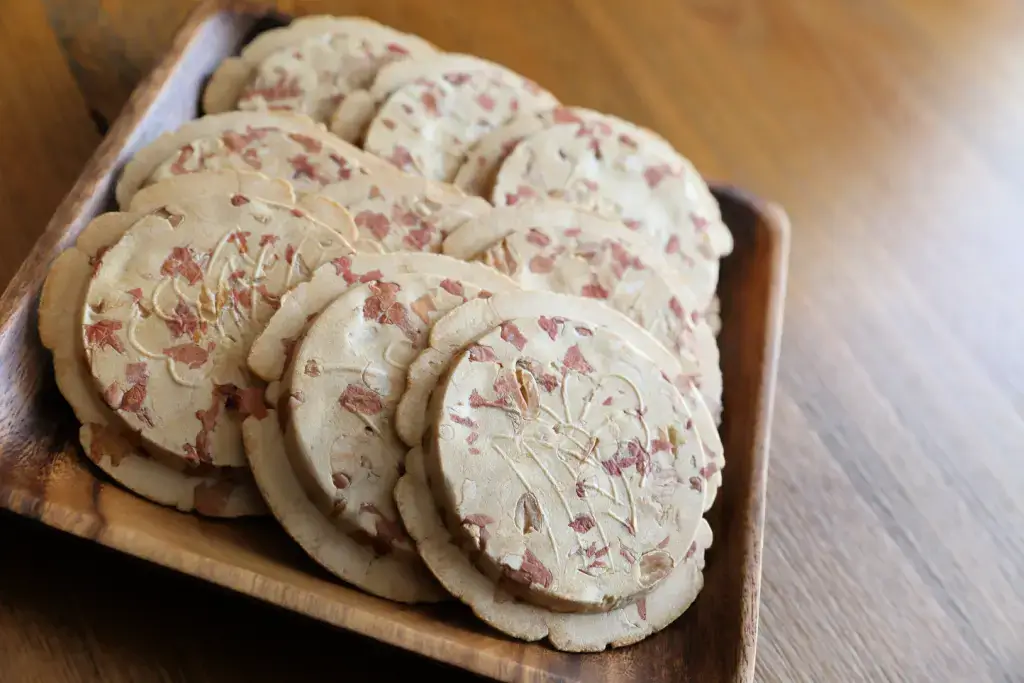Iwate Prefecture is home to Nanbu senbei (Japanese rice cracker), a classic souvenir. The deliciousness of simple nanbu senbei comes from the high-quality ingredients and the care with which they are baked. The most common senbei contain either sesame seeds or peanuts.
It looks like a little flat round waffle with a pretty salty taste. It’s also shaped like a flying saucer, with a crispy thin outer rim referred to as mimi (the ear) in Japanese. The slightly salty taste of this snack pairs well with Japanese tea. Here’s everything you need to know about this signature snack from Iwate!
Table of Contents
ToggleWhere is Iwate Prefecture?
Iwate is a large prefecture on the Pacific coast in the northern Tohoku region. Its prefectural capital is Morioka. It is the second largest prefecture in Japan, behind only Hokkaido. The low population density leaves it with plenty of space for natural beauty. The prefecture is also home to famous festivals, hot spring resorts, stunning coastal scenery, and unique dining opportunities.
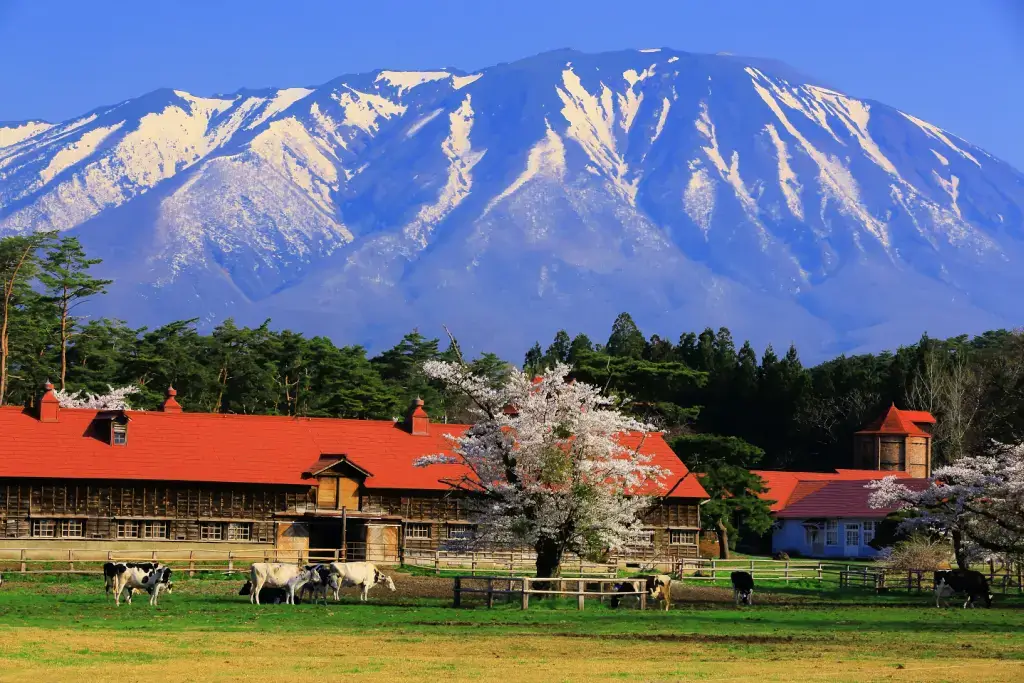
What are some popular foods from Iwate?
Iwate is brimming with a variety of delicious dishes! It’s filled with delicious food and is especially renowned for its top-quality dairy products, beef, and seafood. In addition to its fresh cuisine sourced from farms and the sea, Iwate is also famous for its noodle dishes. For a playful and delicious dining experience, try Wanko Soba. The noodles are generally served with side dishes such as vegetables, spices, and meat to complement their mild, nutty flavor.
Morioka Reimen is a Korean-inspired recipe reimagined by a Japanese shop owner. This cold noodle dish is perfect for summer and features thin noodles served with icy cold spicy broth, kimchi, and watermelon. The soup can be pretty spicy, but the fruit is meant to help soothe your throat. The sweet, spicy, and light flavors create a refreshing meal.

What other dishes are there?
Morioka Jajamen is an udon noodle dish with meat miso and fresh vegetables. Many ingredients, such as ginger, garlic, chili oil, and vinegar, can change the taste. Thanks to the umami-rich miso sauce, this dish features bursts of flavor in every bite.
Given that Iwate’s coast rests along the Pacific Ocean, it’s no surprise that the prefecture is home to delicious seafood. Some local favorites are Pacific saury, mackerel, squid, oysters, sea urchins, wakame seaweed, and sea squirt. Try this fresh cuisine in sashimi or kaisen-don (seafood over rice). Besides seafood, Iwate is famous for Maesawa beef, a type of wagyu from cows raised in Iwate. Like most wagyu, this beef is characterized by its exquisite marbling, rich flavor, and luscious texture.
Looking to experience nanbu senbei and other snacks? Check out Sakuraco! Sakuraco delivers traditional Japanese snacks, teas, sweets, and snacks from local Japanese makers directly to your door so you can enjoy the latest treats directly from Japan!
Nanbu Senbei Origin
At the end of the Edo period (1603-1868), the region experienced famine and poor harvest, which led to a food culture around wheat and buckwheat instead of rice. People used to make half-baked flour or buckwheat crackers, which developed into the crispy nanbu senbei in the Meiji period (1868–1912). Not only were crackers eaten on their own at meal and snack time, but people also began to add broken crackers to their seasonal soups.
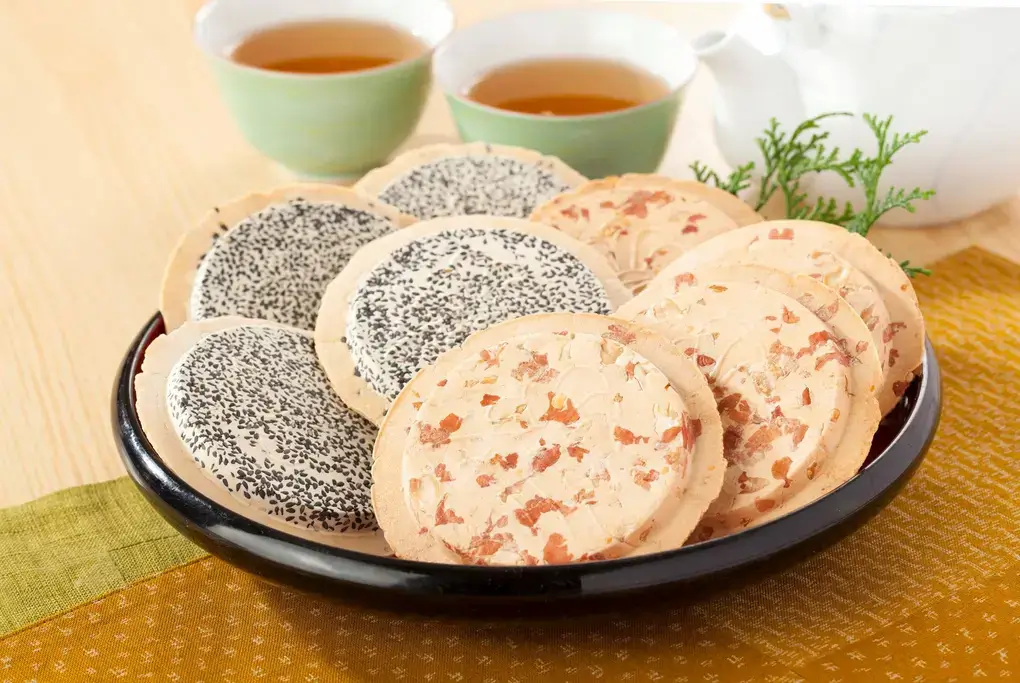
What is Nanbu Senbei?
Nanbu senbei is a special wheat cracker from the Northern Iwate area. It can be eaten on its own at meals or as a snack. They retain their freshness for a long time, so it’s a perfect souvenir to bring to a loved one. It’s made from a dough with wheat flour, water, and salt. The dough is grilled in small round cast iron molds until crisp and light. Simple but satisfying, it has a rustic and deep flavor. Nanbu senbei has a mild, slightly sweet, salty taste that pairs perfectly with tea. It’s among some of the most simple yet versatile Japanese rice snacks.
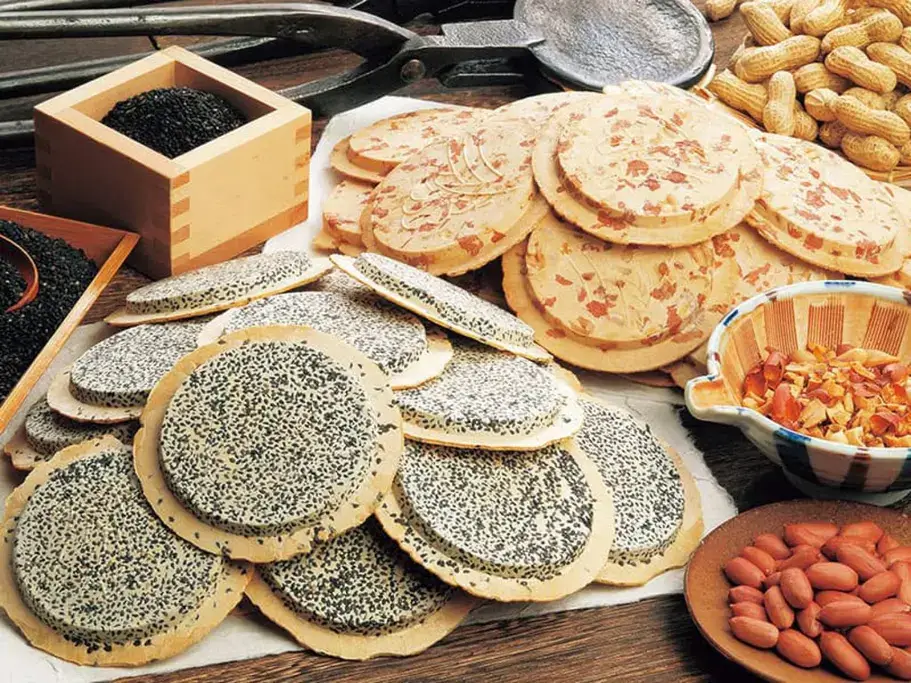
Nanbu Senbei Flavors
There is a wide variety of nanbu senbei available in the market today. Some of the most popular ones include sesame, walnut, soy source, and peanuts. There are even out-of-the-ordinary flavors such as apple, pistachio, walnuts, pumpkin seeds, and more. Aside from the endless flavor options, there are a variety of popular toppings such as peanuts, sesame, and seeds.
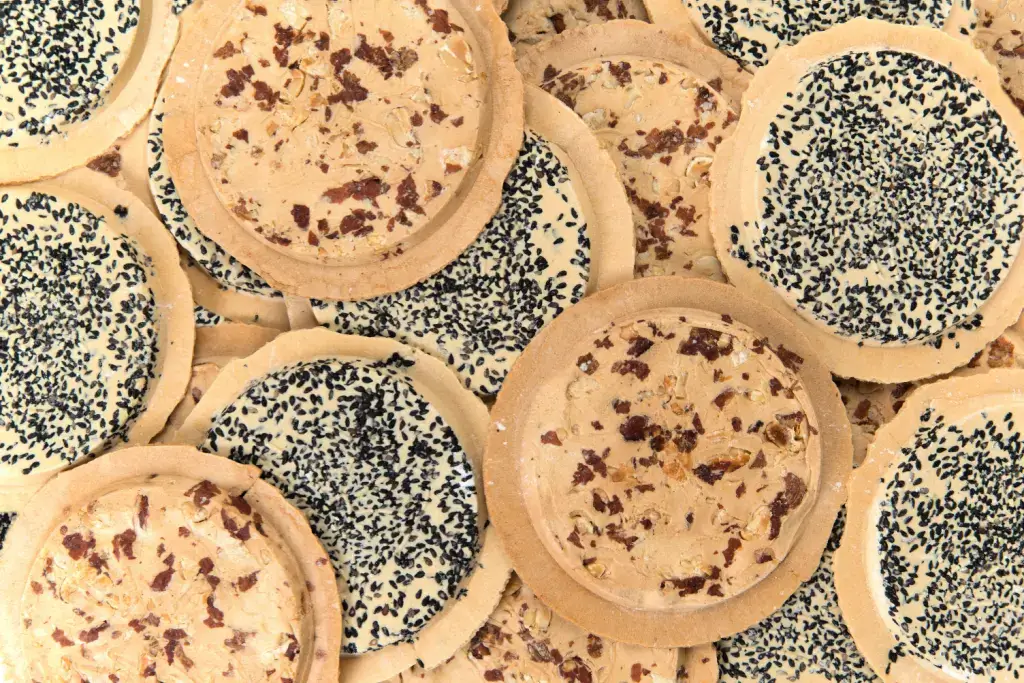
Nanbu Senbei is a classic and one of the delicacies that these people have handed down over the years. It is a famous traditional snack sold everywhere around Iwate prefecture. So you may feel it’s old and plain, but it’s a delicious snack. It has a depth of flavor unlike any other sweet you will ever taste!
So, if you are trying to find the perfect gift for that certain somebody who has everything, or if you are just looking for a snack while exploring Iwate, try this lovely local specialty, nambu senbei. Have you tried Nanbu Senbei before? Do you have a favorite flavor? Let us know in the comments below!

